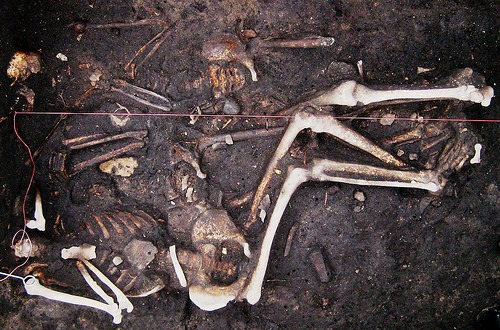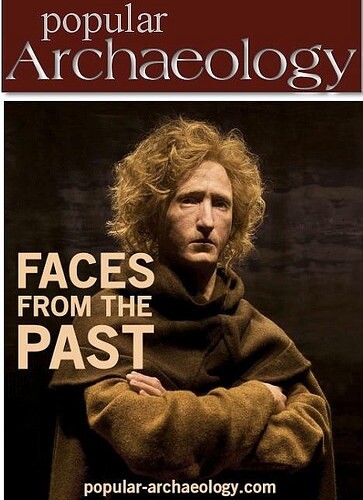
The bacteria that causes plague, Y. pestis, may have persisted long-term in Europe from the 14th to 17th century in an unknown reservoir, according to a study published January 13, 2016 in the open-access journal PLOS ONE by Lisa Seifert from Ludwig Maximilian University of Munich, Germany, and colleagues.
Not all researchers agree about the role Yersinia pestis played in the second plague pandemic which occurred from the 14th to 17th century. Some suggest it may have been a result of a viral disease; however, most recent research on ancient plague demonstrates that the deadly disease existed thousands of years earlier than previously thought. In this study researchers recovered and analyzed ancient DNA from 30 plague victims of the second plague pandemic. They were excavated from two different burial sites in Germany, and spanning more than 300 years.
__________________________________________
Above: Original photograph of the triple-inhumation regarding the three male soldiers (Brandenburg, Germany), is dated to the Thirty Years’ War (1618-1648). Credit: Seifert et al.
________________________________________________________
Of 30 skeletons tested, eight were positive for Yersinia pestis-specific nucleic acid. All positive individuals genetic material were highly similar to previously investigated plague victims from other European countries and had identical Y. pestis genotype. The author suggest that in addition to the assumed continuous reintroduction of Y. pestis from central Asia in multiple waves during the second pandemic, it’s also possible that Y. pestis persisted long-term in Europe in a yet unknown reservoir host.
Source: PLOS ONE press release.
Seifert L, Wiechmann I, Harbeck M, Thomas A, Grupe G, Projahn M, et al. (2016) Genotyping Yersinia pestis in Historical Plague: Evidence for Long-Term Persistence of Y. pestis in Europe from the 14th to the 17th Century. PLoS ONE 11(1): e0145194. doi:10.1371/journal.pone.0145194
________________________________________________________
In addition, the latest Popular Archaeology ebook is now available.
______________________________________________
Travel and learn with Far Horizons.
____________________________________________
This richly illustrated issue includes the following stories: Two remarkable discoveries that are shedding light on human beginnings in Africa; a traveling exhibit and an archaeological site that show how knowledge is more valuable than gold; a Spanish cave and a unique burial that are offering a tantalizing glimpse on the lives of Ice Age hunter-gatherers in Europe; the stunning visual reconstruction of an ancient Roman town; enlightening new finds at a remarkably well-preserved site of ancient Hellenistic-Roman culture overlooking the Sea of Galilee; rare finds that are shedding light on occult practices among ancient Greeks in Sicily; and an overview of the overwhelmingly rich archaeological heritage of Britain. Find it on Amazon.com.









